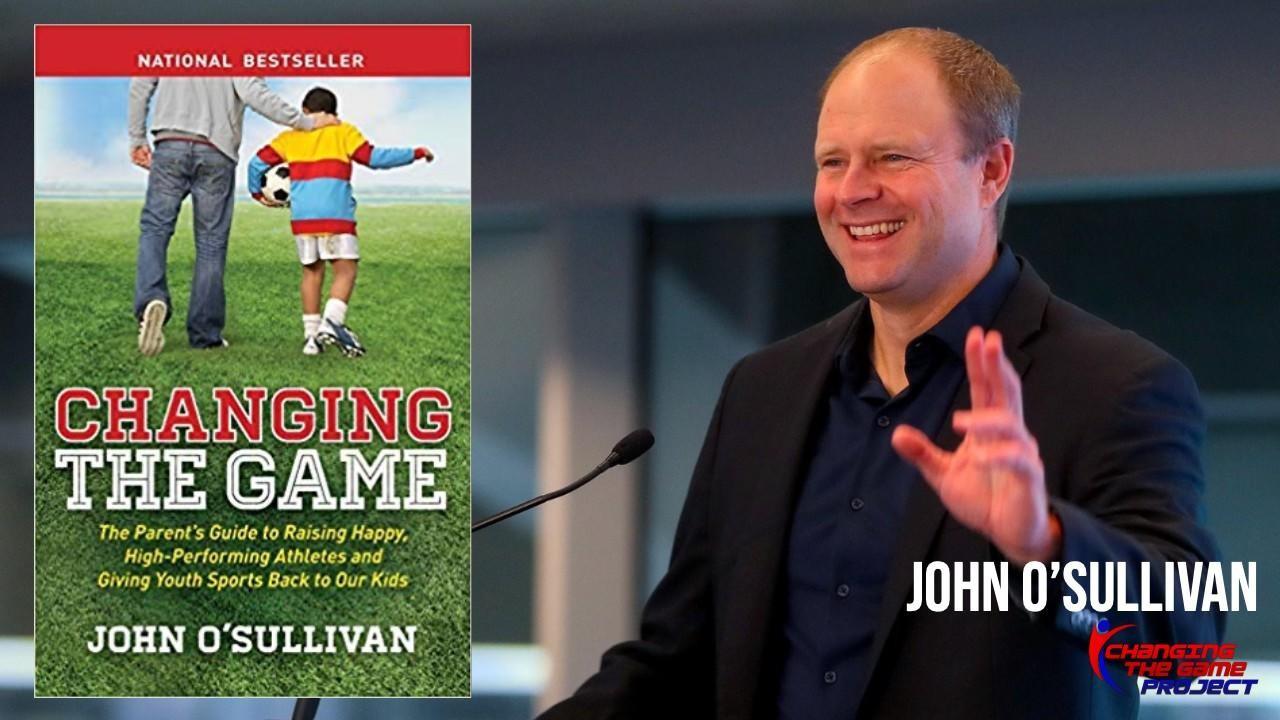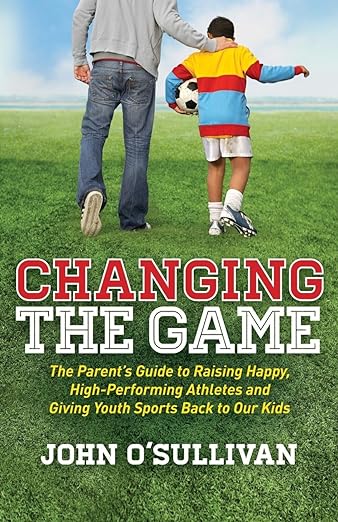(This article includes Amazon Affiliate links, on which SoccerWire may receive a commission)
When it comes to youth soccer, everyone has the same end goal: to see children grow, develop, and succeed not just as players, but as people as well. But how that goal is met is fraught with challenges. In a world where players are contending for not only victories on the field, but also spots on rosters and as they grow older opportunities at the collegiate level, emotions can run high, particularly for those on the sideline.
The question is: how can parents help their children succeed on the field and help them continue to grow and develop in a positive manner?
In John O’Sullivan’s book, ‘Changing the Game: The Parent’s Guide to Raising Happy, High-Performing Athletes and Giving Youth Sports Back to Our Kids‘, that question is front and center. It is a question that has become increasingly more prescient as the stakes within youth sports continue to rise. Soccer is not immune to this dilemma either. With 2.2 million children participating in youth soccer, the sport is becoming more popular than ever. Yet, there are challenges to that growth. As O’Sullivan outlines in the book, there is an alarming rate of players dropping out of youth sports as a whole, including soccer.
Figuring out why this is occurring is something that all organizations are trying to uncover. The subject has broader implications beyond just players not wanting to play. With children dropping out of youth sports and becoming more sedentary, issues such as obesity and diabetes become prevalent.
O’Sullivan hits on this topic early centering the discussion around players no longer enjoying playing the game.
There are a variety of reasons given. From the over-push towards playing for a handful of college scholarships to behavior from those on the sideline to structural problems within the broader youth soccer culture (pay-to-play in particular) are all major themes throughout his book. Drawing on his experience in the game as both a coach, a parent, and the founder of the Changing The Game Project O’Sullivan steps on how parents and coaches can play an important role in keeping their children engaged and playing.
How that is done is a key piece of the book and O’Sullivan provides a high level of detail for each step in what he calls ‘The 7 C’s of a High Performing State of Mind:’ Common Sense, Conditions, Communication, Control, Competence, Control and Caring. Through each step he provides valuable insight into how children think and what motivates them and provides parents and coaches with key questions (Dubbed ‘Game-Changing Questions’) that they can ask players to help further development but in a positive manner. There are also Action Steps for adults to take along the way to have some self-reflection identifying behaviors and attitudes that are positively impacting and those that may need to be re-evaluated.
What sets Changing the Game apart from many youth soccer books on the market is the engagement that it looks to have with its readers and the desire to see them apply what they are learning to the pitch and the world. Although O’Sullivan recognizes the tall task ahead of changing the culture within youth soccer, he remains positive and much like any good coach does, provides leading questions and ideas for the reader to consider. Over the years, the book has provided countless thought-provoking and positive discussions within the world of not just American youth soccer, but youth sports globally. Although written in 2014, the discussions and themes outlined in the book are still great resources for parents and coaches today.
As part of our expanded coverage on youth soccer, SoccerWire will be providing book reviews on some of the best youth soccer books that are available for players and parents. If there is a book that you would like to see covered, please contact our Staff Writer Sean Maslin at [email protected].









